Ship Ahoy

Brief Synopsis
Cast & Crew
Edward Buzzell
Eleanor Powell
Red Skelton
Bert Lahr
Virginia O'brien
William Post Jr.
Film Details
Technical Specs

Synopsis
Broadway dancer Tallulah Winters is about to sail to Puerto Rico with Tommy Dorsey and his Orchestra when she is summoned to the office of Inspector Davis. Davis asks her to perform an important service for the government by taking the most powerful magnetic mine in existence on her voyage, explaining that it cannot fall into enemy hands and she would never be suspected of hiding it. He then gives her half of an old coin and says that she will be contacted onshore by the person with the other half. Unknown to Tallulah, Davis is part of a spy ring headed by Dr. Farno, who devised his plan after reading a dime magazine story written by Merton K. Kibble.
Merton, who is a chronic hypochondriac, is so prolific that he employs three secretaries, but suffers from stress over all of his deadlines. Because his assistant, "Skip" Owens, wants to romance Talullah's assistant, Fran Evans, Skip convinces Merton to take the cruise to Puerto Rico when Merton's doctor refuses to treat his imagined ailments. Onboard ship, Merton and Tallulah meet and are soon attracted to each other. Meanwhile, real government agents H. U. Bennett and his assistant, Art Higgins, receive permission from the ship's captain to search for the missing mine, which they know must be onboard.
The night before the ship docks, while attending a costume party, Tallulah demonstrates for Merton that she once used Morse Code for a tap dance in a show. He asks her to tap out "You're wonderful," then tells her he loves her. Later, in his cabin, Merton receives a telegram from his publisher, spurring him on to work on a new story. As he and Skip are discussing the plot of the story, Tallulah walks by his window and, misinterpreting what he is saying, concludes that Merton is really a cad. The next day, Farno and his cohort, Pietro Polesi, wait for Tallulah on the dock, while Merton goes to her cabin. He is shocked and confused by her strange reaction to him, and when he tries unsuccessfully to talk with her on deck, he accidentally switches suitcases with her. Tallulah then leaves, not knowing that Merton now has the bag with the mine in it.
Onshore, as Bennett and Higgins discuss the case with a local government agent, Bennett recognizes a photograph taken of Farno at the dock. Bennett then concludes that it is Farno who has paid for the entertainers to come to Puerto Rico. Meanwhile, in Tallulah's dressing room on Polesi's nightclub ship, Polesi hands her the matching half coin and tells her that her contact is Dr. Farno, who wants her to give him the mine between shows that night. After Polesi leaves, Talluluh goes to get the suitcase with the mine and realizes that she has Merton's case instead of her own. She then sneaks into Merton's room and, following a series of mix-ups with Merton and the house detective, finally gets away with the right case. She gives the mine to Farno, who is concerned when she casually tells him about the mix-up. He then tells Tallulah that Merton, who is just boarding the ship at that moment, is actually a spy. She does not believe Farno and after Skip and Merton are brought to Farno's office, they are imprisoned by one of Farno's thugs. Using a ploy he concocted for a book, Merton soon breaks free, taking Skip with him.
As Tallulah prepares for her show, Bennett comes to her with his government badge and she thinks that he is working with Farno, but when Farno's thugs take Bennett prisoner, she begins to realize the truth. Farno plans to dispose of Tallulah, but because the crowd is calling for her, realizes that she must perform, and allows her to go onstage, warning her not to try anything. While she dances, Tallulah uses her Morse Code tap trick to signal an SOS. Higgins, who is in the audience, "reads" the signal, then motions to her to continue. When her message is complete, he signals that he understands, and Merton and Skip, who also realize what Tallulah is doing, help him. They go to Farno's office and after a scuffle, Skip and Merton escape with the mine and enter a lifeboat. With Tallulah's help, they are lowered into the ocean and after rowing for some time, eventually land on an American submarine.

Director
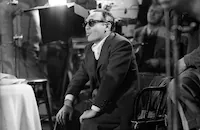
Edward Buzzell
Cast

Eleanor Powell

Red Skelton

Bert Lahr

Virginia O'brien
William Post Jr.
James Cross
Eddie Hartman
Stuart Crawford
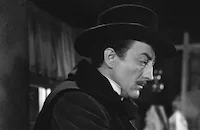
John Emery
Bernard Nedell
Tommy Dorsey
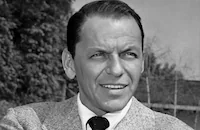
Frank Sinatra
Buddy Rich
Ziggy Elman

Moroni Olsen
George Watts
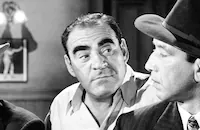
Ralph Dunn
William Tannen
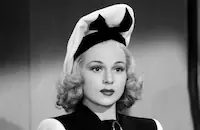
Carol Hughes
Gladys Blake
Mary Currier
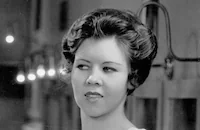
Mary Treen
Grace Hayle
John Dilson
Barbara Bedford
Bobby Larson
Mariska Aldrich
Charles R. Thomas
James Warren

Bryant Washburn Sr.
Victor Zimmerman

Hillary Brooke

Natalie Thompson
Anne O'neal
John Raitt
Bud Geary
Mark Daniels
Cliff Danielson
Henry Rowland
Lou Lubin
Baldy Cooke
Arthur Stuart Hull
Ed Mortimer
Louise Bates
Joe Dominguez
Otto Reichow
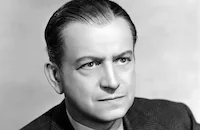
Russell Hicks
Henry Guttman
Julian Rivero
Philip Ahn
Robin Raymond

Nestor Paiva
Frank Marlowe
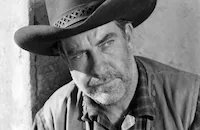
Grant Withers
Ernie Alexander
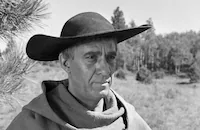
Martin Garralaga
Henry Sylvester
George Sorel
Grandon Rhodes

Addison Richards
Harvey Karels
Charles Teske
Jerry James
Harold Knight
Charles Mayon
Hal Rand
The Pied Pipers
The Guardsmen
Crew
Leo Arnaud
George Bassman
George Bassman
Matt Brooks
Harry Clork
Bobby Connolly
Jack Cummings
Margery Cummings
Clyde De Vinna
Cedric Gibbons
E. Y. Harburg
Kalloch
Bert Kalmar
Burton Lane
Charles Levin
Edward Madden
Harry Mcafee
Jack D. Moore
Johnny Noble
Sy Oliver
Robert Planck
Merrill Pye
Bradford Ropes
Walter Ruick
Conrad Salinger
Blanche Sewell
Douglas Shearer
Al Shenberg
Leonard Smith
Georgie Stoll
Odd Stordahl
Percy Wenrich
Edwin B. Willis

Photo Collections
Videos
Movie Clip




Trailer
Film Details
Technical Specs

Articles
Ship Ahoy
Ship Ahoy was originally called I'll Take Manila, but by the time the film was released in May 1942, the Japanese had taken the Philippines. The result was a new title, a new setting (Puerto Rico), and a new song: the number "I'll Take Manila" became "I'll Take Tallulah"!
That would be Tallulah Winters, the name of the character played by Eleanor Powell. She's a dancer with Dorsey's band on a passenger ship to Puerto Rico. On board, she gets involved in a spy plot involving stolen plans for a new weapon. Red Skelton, Bert Lahr and specialty performer Virginia O'Brien (with her trademark deadpan style) provide much of the comedy, but really it's the music and dancing that are the show here. Variety thought so, too, calling the picture "grandiose silliness" and praising the music above all else. The reviewer also declared Lahr to be "the comic mainstay of the film," outshining even Skelton, who had only recently become a star thanks to his turn in Whistling in the Dark (1941).
Eleanor Powell was one of the best dancers ever to light up the screen, and she does not disappoint. She had recently and memorably partnered with Fred Astaire in Broadway Melody of 1940 (1940) and appeared in the starring vehicle Lady Be Good (1941). Her career wouldn't last much longer, however. She acted in I Dood It (1943) and Thousands Cheer (1943), soon thereafter marrying Glenn Ford and basically retiring to become a wife and mother. Deeply religious, she later wrote and acted in a 1950s television series called The Faith of our Children. Author Jeanine Basinger (The Star Machine) has written that Powell is used in Ship Ahoy to provide musical background in a vehicle primarily designed to further the stardom of Red Skelton. Still, Basinger writes, Powell displays a cornucopia of dancing: "She does a hotcha hula that irritated Hawaiians, a mock bullfight, and a hokey cowboy number with spinning lariats she twirls and jumps through." Her most entertaining moment, though, comes when "she taps out a Morse Code SOS to warn the hero about endangerment from spies."
Frank Sinatra had made his feature debut one year earlier, in Las Vegas Nights (1941). He'd only recently broken into the limelight, signing with Harry James's band in 1939 for $65/week before Tommy Dorsey snagged him away for $100/week. While with Dorsey, Sinatra appeared in Las Vegas Nights and Ship Ahoy, and soon afterwards he broke out on his own and won the enthusiasm of bobbysoxers everywhere. Here's how Sinatra explained his appeal: "Perfectly simple: It was the war years and there was a great loneliness, and I was the boy in every corner drugstore, the boy who'd gone off drafted to the war. That's all."
In Ship Ahoy, Sinatra sings "The Last Call For Love," "Poor You," and "Moonlight Bay." (Other tunes in the film include "Tampico," "How About You?" and "I'm Getting Sentimental Over You.") Tommy Dorsey's band at this time was at the top - up there with Glenn Miller. Sinatra was of course a huge factor, but Dorsey also had famed trumpeter Ziggy Elman and drummer Buddy Rich, late of Artie Shaw's band.
As George T. Simon wrote in The Big Bands, "Sinatra blossomed with Dorsey, and with Sinatra the Dorsey band became more successful than ever." Though they ultimately parted on not the greatest of terms, Sinatra respected the bandleader. In a 1940s interview, Sinatra said: "There's a guy who was a real education to me in every possible way. I learned about dynamics and phrasing and style from the way he played his horn, and I enjoyed my work because he sees to it that a singer is always given a perfect setting." Sinatra left Dorsey in the summer of 1942, just a few months after Ship Ahoy was released. Dorsey replaced him with Dick Haymes, and soon after that, Teddy Walters.
Though Ship Ahoy was an MGM movie, Sinatra was not under contract to the studio yet. RKO signed him to his first contract, and Sinatra made two films for the studio: Higher and Higher (1943), his first credited picture, and Step Lively (1944). MGM's Louis B. Mayer then bought out the contract and put him in Anchors Aweigh (1945), and Sinatra's film career really began.
Producer: Jack Cummings
Director: Edward Buzzell
Screenplay: Harry Clork; Matt Brooks, Bradford Ropes, Bert Kalmar (story); Irving Brecher, Harry Kurnitz (uncredited)
Cinematography: Robert H. Planck, Leonard Smith (as Arthur Miller)
Art Direction: Cedric Gibbons
Music: George Bassman, George E. Stoll (both uncredited)
Film Editing: Blanche Sewell
Cast: Eleanor Powell (Tallulah Winters), Red Skelton (Merton K. Kibble), Bert Lahr (Skip Owens), Virginia O'Brien (Fran Evans), William Post, Jr. (H.U. Bennet), James Cross ('Stump'), Eddie Hartman ('Stumpy'), Stuart Crawford (Art Higgins), John Emery (Dr. Farno), Bernard Nedell (Pietro Polesi), Tommy Dorsey and his orchestra featuring Frank Sinatra.
BW-95m.
by Jeremy Arnold

Ship Ahoy
Quotes
Trivia
Notes
The film's working title was I'll Take Manila. According to Hollywood Reporter news items, the title was changed "in view of the situation in the Pacific which deflates the value of this pun." The film started production before the United States' entry into World War II. By the time of the film's release, in May 1942, the Philippines had fallen to the Japanese and the destination of the ship in the film was changed from Manila to Puerto Rico. One of the film's songs, "I'll Take Tallulah," was also changed from its original title, "I'll Take Manila." According to various news items in Hollywood Reporter, director of photography Robert Planck shot the dance numbers that were added to the film in late December 1941. Retakes were shot by Clyde DeVinna, according to Hollywood Reporter, which also noted that because both Bert Lahr and Virginia O'Brien were ill, stand-ins had to be used for some insert shots.
According to various Hollywood Reporter news items, the film was originally to co-star Eleanor Powell and Robert Young. In mid-July 1941, it was announced that Desi Arnaz was being borrowed from RKO for a role in the film. In September 1941, Hollywood Reporter stated that Tony Martin was set for a "singing lead" with Powell and Red Skelton. It is possible that the role intended for either Arnaz or Martin was removed from the script, or changed for Frank Sinatra. Although Sinatra sings in the film, he has no dialogue. Another Hollywood Reporter news item included Donald McBride in the cast, but he was not in the released film. Ship Ahoy was Sinatra's first film at M-G-M, the studio at which he was under contract for much of the 1940s, following a brief period of being under contract to RKO. One number shot but not used for the film, "I Fell in Love (With the Leader of the Band)," by Jule Styne and Herb Magidson, was included in M-G-M's 1945 film The Great Morgan.















